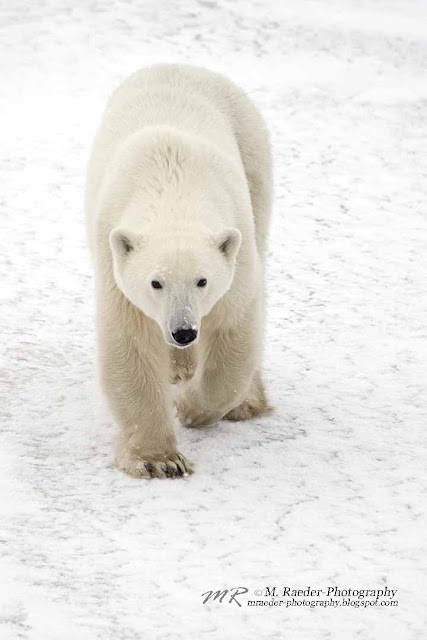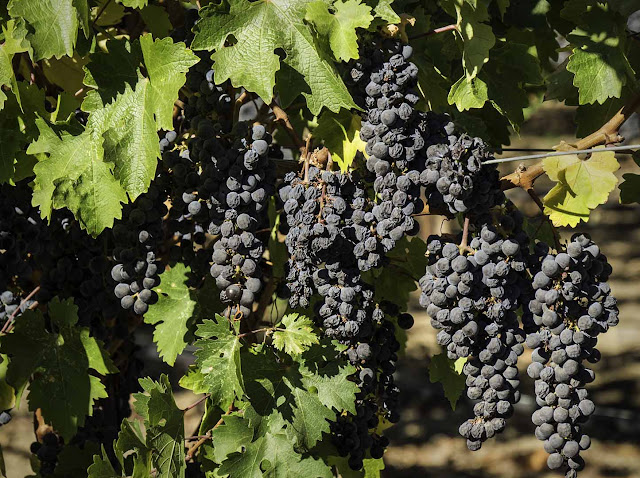How do Polar Bears find their way?

 While we don’t know precisely how polar bears navigate over large areas and in seasonally appropriate ways, we do have some understanding of how they may use their senses to gain information from their environment as to their whereabouts, and the whereabouts of the resources they seek. A keen sense of smell is essential for tracking and assessing the "identity" of potential mates; and it may be equally advantageous for avoiding other, potentially aggressive polar bears. The keen sense of smell is also an essential "tool" polar bears can use to locate a snow lair holding a tasty and important seal meal. Polar bears also have good hearing, and this may aid them in determining whether a seal lair is occupied or not.
While we don’t know precisely how polar bears navigate over large areas and in seasonally appropriate ways, we do have some understanding of how they may use their senses to gain information from their environment as to their whereabouts, and the whereabouts of the resources they seek. A keen sense of smell is essential for tracking and assessing the "identity" of potential mates; and it may be equally advantageous for avoiding other, potentially aggressive polar bears. The keen sense of smell is also an essential "tool" polar bears can use to locate a snow lair holding a tasty and important seal meal. Polar bears also have good hearing, and this may aid them in determining whether a seal lair is occupied or not.
 Clearly, the natural challenges of navigating the Arctic sea ice are numerous, but polar bears are uniquely adapted to this lifestyle, and thrive amidst the many natural challenges that come along with life on the dynamic, ever-moving, sea ice.
Clearly, the natural challenges of navigating the Arctic sea ice are numerous, but polar bears are uniquely adapted to this lifestyle, and thrive amidst the many natural challenges that come along with life on the dynamic, ever-moving, sea ice.

Searching not wandering
Polar bears range over vast areas of the Arctic sea ice, traveling through the polar bear night and across drifting pack ice seemingly without difficulty. While there is still much we don’t know about polar bears, it’s clear they must actively navigate their ever-changing habitat.
For example, polar bears demonstrate general fidelity to a given geographic region: a bear born on the Hudson Bay coast will likely spend its life navigating the seasonal sea ice of that region. Further, the search for essential resources—food and mates—is a key driver of polar bear movements. For females, another important reason for traveling is to find a suitable den location when pregnant—a supremely important aspect of the polar bear’s life cycle.
Now consider the challenges that come with navigating over vast areas of the Arctic sea ice in search of essential resources: few (if any) landmarks, extreme weather, months of darkness (and months of brightness!), and, perhaps most important, the ever-dynamic sea ice that is constantly moving and changing beneath their feet. Sound challenging? It certainly does to me! So how do polar bears do it?
Polar bear senses
 While we don’t know precisely how polar bears navigate over large areas and in seasonally appropriate ways, we do have some understanding of how they may use their senses to gain information from their environment as to their whereabouts, and the whereabouts of the resources they seek. A keen sense of smell is essential for tracking and assessing the "identity" of potential mates; and it may be equally advantageous for avoiding other, potentially aggressive polar bears. The keen sense of smell is also an essential "tool" polar bears can use to locate a snow lair holding a tasty and important seal meal. Polar bears also have good hearing, and this may aid them in determining whether a seal lair is occupied or not.
While we don’t know precisely how polar bears navigate over large areas and in seasonally appropriate ways, we do have some understanding of how they may use their senses to gain information from their environment as to their whereabouts, and the whereabouts of the resources they seek. A keen sense of smell is essential for tracking and assessing the "identity" of potential mates; and it may be equally advantageous for avoiding other, potentially aggressive polar bears. The keen sense of smell is also an essential "tool" polar bears can use to locate a snow lair holding a tasty and important seal meal. Polar bears also have good hearing, and this may aid them in determining whether a seal lair is occupied or not.
When navigating over longer distances and in accordance with more seasonal movements, the sense of smell may also provide bears in some regions with information regarding their proximity to land. This can be of great importance to polar bears living in the seasonal sea ice ecosystems or in the high Arctic archipelagos, where land holds important denning habitat and the refugiarequired when the sea ice diminishes during the summer months.
Cycles of darkness and light
During the winter months, darkness prevails, and during the summer months, the days are long and bright with sunlight that reflects off the white snow and sea ice. How good is polar bear vision and how is it adapted to these extremes? The truth is we don’t know. Certainly, polar bears use their vision to assess the landscape and resources they seek, but how they adjust to the dramatic changes in light has not yet been determined.
The dynamic sea ice
The sea ice is constantly moving in both "predictable" and unpredictable ways. Imagine trying to get from point A to point B, when the "ground" beneath your feet is moving to point C! This dynamic sea ice provides a prominent environmental challenge that polar bears face when navigating their environment.
While we don’t know for sure how polar bears account for this dynamic movement, research has shown that they don’t let the drift of the sea ice tell them where to go. Polar bears sense, somehow, the movements of the sea ice, and adjust their movements accordingly.
Generally speaking, this type of "dead reckoning" is broadly found in animals, but we know little about the physiological mechanisms that make it possible (though it is likely that the vestibular organs of the inner ear are involved—acting like an accelerometer—along with cognitive processing, which taps into learning and memory). And while many animals can sense the earth’s magnetic field, providing important information on location, magnetic way-finding becomes less and less informative as one approaches the magnetic North Pole.
Climate change is making the sea ice more dynamic
 Clearly, the natural challenges of navigating the Arctic sea ice are numerous, but polar bears are uniquely adapted to this lifestyle, and thrive amidst the many natural challenges that come along with life on the dynamic, ever-moving, sea ice.
Clearly, the natural challenges of navigating the Arctic sea ice are numerous, but polar bears are uniquely adapted to this lifestyle, and thrive amidst the many natural challenges that come along with life on the dynamic, ever-moving, sea ice.
However, sea ice losses driven by an unprecedented increase in greenhouse gas emissions, are increasing the dynamism of the sea ice, as the ocean’s currents, waves, and wind hold a greater influence on sea ice stability.
While polar bears have evolved over evolutionary time (thousands and thousands and thousands of years!) to meet the challenges of their extreme environment, the rapid transformation of the Arctic sea ice will reduce the polar bear’s capacity to successfully navigate the vast expanses of their range. It’s up to all of us to make sure that the polar bear can navigate the vast Arctic, always.
Written by Megan Owe, December 7. 2015
Image copyright 2015 M. Raeder-Photography
Til next time,
Meggi
Meggi











































